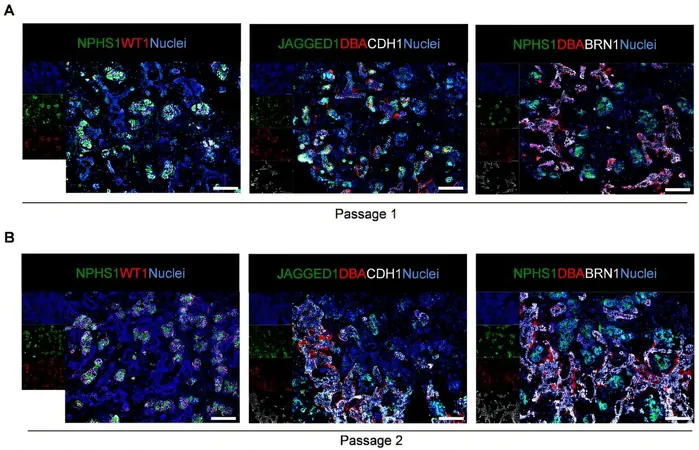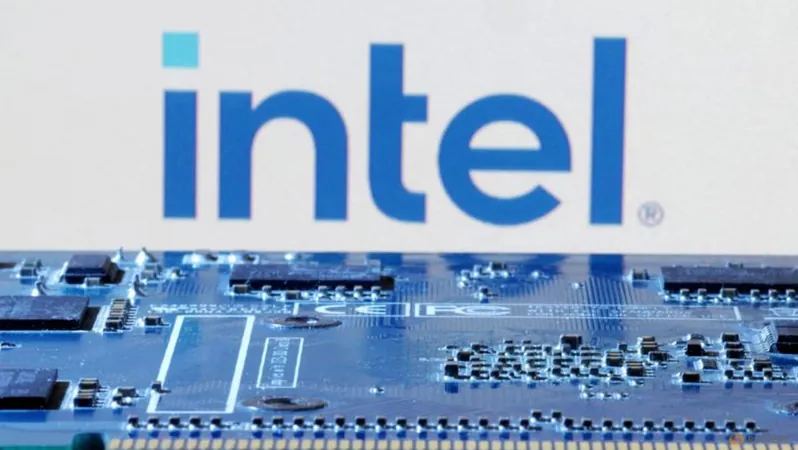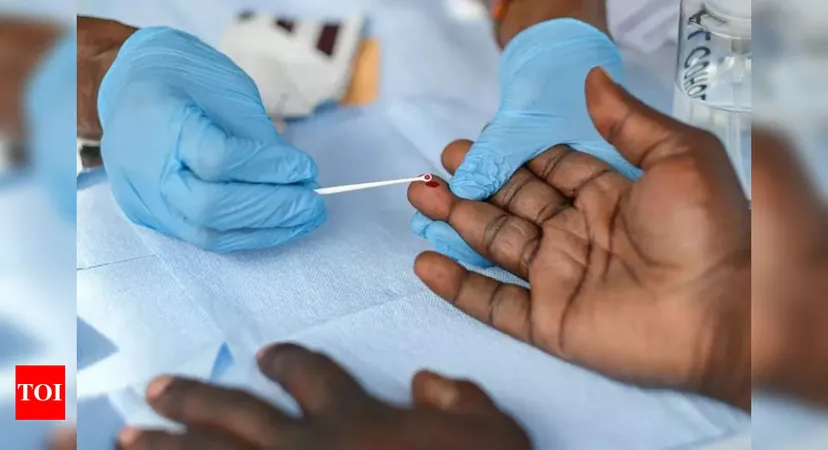
Breakthrough in Kidney Regeneration: Researchers Unveil New Method to Cultivate Stem Cells!
2025-04-03
Author: Daniel
Introduction
In a groundbreaking development that promises to revolutionize renal medicine, Professor Kenji Osafune and his dedicated research team have succeeded in innovating a highly effective method for cultivating kidney progenitor cells derived from induced pluripotent stem (iPS) cells. This exciting advance is documented in a recent publication in the prestigious journal Science Translational Medicine.
The Challenge of Kidney Diseases
Chronic Kidney Disease (CKD) and acute kidney injury (AKI) represent significant challenges in modern healthcare, often leaving patients with limited options. The race for viable treatments has turned increasingly towards regenerative medicine, particularly cell replacement therapies, which hold the potential to restore kidney function. However, large-scale production of the requisite cells has remained a daunting obstacle—until now.
Promising Experiments
In a series of experiments using a mouse model of AKI induced by the chemotherapy agent cisplatin, the research team showcased the promising therapeutic capability of human iPS cell-derived nephron progenitor cells (hiPSC-NPCs). The transplantation of these cells significantly improved the survival rates of the mice by effectively preventing further deterioration of renal function.
Innovative Culturing Method
Recognizing the vast difference in body size between mice and humans—a factor that necessitates a colossal number of cells for effective human application—the researchers refocused their efforts on refining the cell expansion process. Instead of the conventional single-layer culture in static mediums, they experimented with culturing the cells as spherical clumps in suspension within a specially formulated medium enriched with three key chemicals that promote kidney growth and development.
Results of Clump Culturing
This innovative method not only helped the cells maintain their characteristic nephron progenitor protein markers but also allowed for their continuous expansion. Subsequent transplantation of these clump-cultured cells into mouse kidneys led to their differentiation into multiple kidney cell types, contributing to the formation of the organ's various components.
Cell Density and Oxygen Levels
The research further revealed that the success of this clump growth method heavily relies on the initial cell density, indicating that oxygen levels may play a critical role in the expansion process. Impressively, these cultured cells retained their therapeutic potential, effectively aiding recovery in both AKI and CKD mouse models following transplantation.
Novel Marker Discovery
A significant finding of their work was the identification of a novel marker that can enhance the purification of hiPSC-NPCs, enabling researchers to expand these cells up to 100-fold across just two culture passages—a milestone that could simplify and scale up future applications.
VEGF-A and Kidney Regeneration
Additionally, the team discovered that hiPSC-NPCs secrete Vascular Endothelial Growth Factor A (VEGF-A), a critical protein involved in blood vessel formation and stability. Notably, cells devoid of the VEGFA gene showed compromised therapeutic efficacy in transplanted mouse models, underscoring the importance of this protein in enhancing kidney regeneration.
Conclusion
This pioneering research not only sets the stage for potential therapies that could transform lives for those grappling with kidney diseases, but also brings us one step closer to realizing the full promise of regenerative medicine. Will we soon see a reality where kidney failures are a thing of the past? Stay tuned as science paves the way for hope!



 Brasil (PT)
Brasil (PT)
 Canada (EN)
Canada (EN)
 Chile (ES)
Chile (ES)
 Česko (CS)
Česko (CS)
 대한민국 (KO)
대한민국 (KO)
 España (ES)
España (ES)
 France (FR)
France (FR)
 Hong Kong (EN)
Hong Kong (EN)
 Italia (IT)
Italia (IT)
 日本 (JA)
日本 (JA)
 Magyarország (HU)
Magyarország (HU)
 Norge (NO)
Norge (NO)
 Polska (PL)
Polska (PL)
 Schweiz (DE)
Schweiz (DE)
 Singapore (EN)
Singapore (EN)
 Sverige (SV)
Sverige (SV)
 Suomi (FI)
Suomi (FI)
 Türkiye (TR)
Türkiye (TR)
 الإمارات العربية المتحدة (AR)
الإمارات العربية المتحدة (AR)